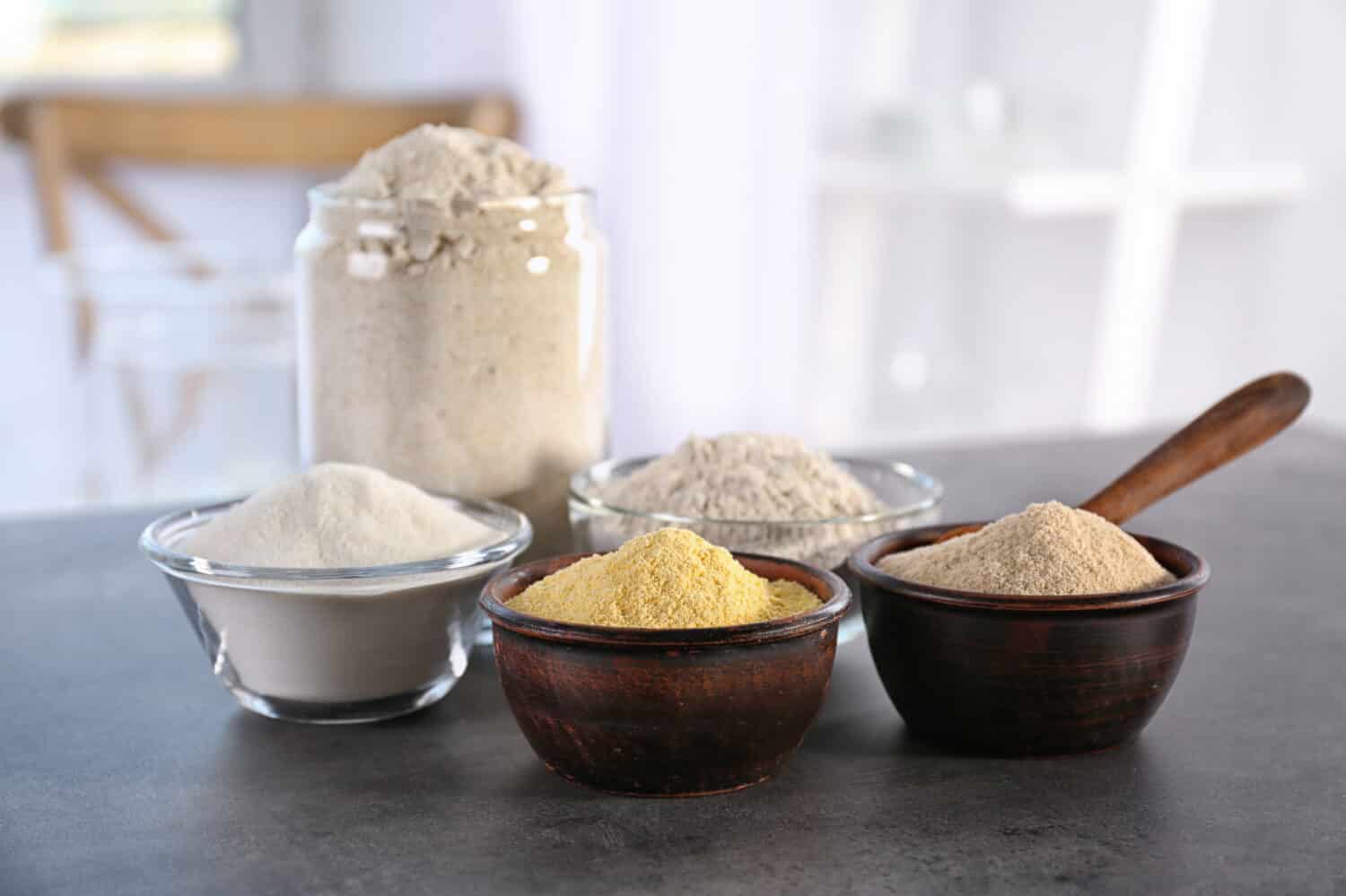If you’ve ever wondered the difference between tapioca starch vs. flour, you’re in the right place. Firstly, tapioca starch comes from something called a cassava root. Because of its origin, it is gluten-free, which is not true of all kinds of flour. Flour is a broad term for the powdered result of ground-down grains, beans, nuts, seeds, and roots. Common types of flour include almond flour, which is gluten-free, and wheat flour, which is not. Stay tuned to learn about the other kinds of flour.
This all to say, the main differences between tapioca starch vs. flour come down to their origins, how they are made, their taste, and their gluten content. Tapioca starch is a type of flour, but not all flours are made from tapioca, so the two are inherently different. For clarity, please note that cassava flour is different than tapioca starch/flour, even though they come from the same root.
In this post, you’ll learn about the history of processing tapioca starch and other kinds of flour. We’ll talk about how the way of making these flours has evolved over the years. We'll discuss recipe ideas and learn about how these flours are made. By the end of this post, you’ll clearly know the difference between tapioca starch in comparison to other flour types. Your next grocery store trip will be a breeze when you know exactly what kind of starch, or flour, you need for a specific recipe.
Tapioca Starch vs. Flour: What Is the Difference?
Tapioca starch is a gluten-free flour, but not all flour is gluten-free. This starch comes from the process of drying out and grinding down a cassava root to extract the starch. Other flours are ground-down nuts, grains, roots, seeds, and beans. Each has its own variation in processes, which we’ll get a bit into soon.
What Is Tapioca Starch?
Tapioca starch is a gluten-free flour derived from cassava root. Cassava root, when dried and ground, becomes a powdery, high-starch flour alternative. There are many forms of tapioca from cassava root. You may be familiar with the jelly version or the kind in pudding. There’s also cooked tapioca, which appears in recipes like this strawberry rhubarb pie. These variations are a processed version of cassava root (via Brittanica).
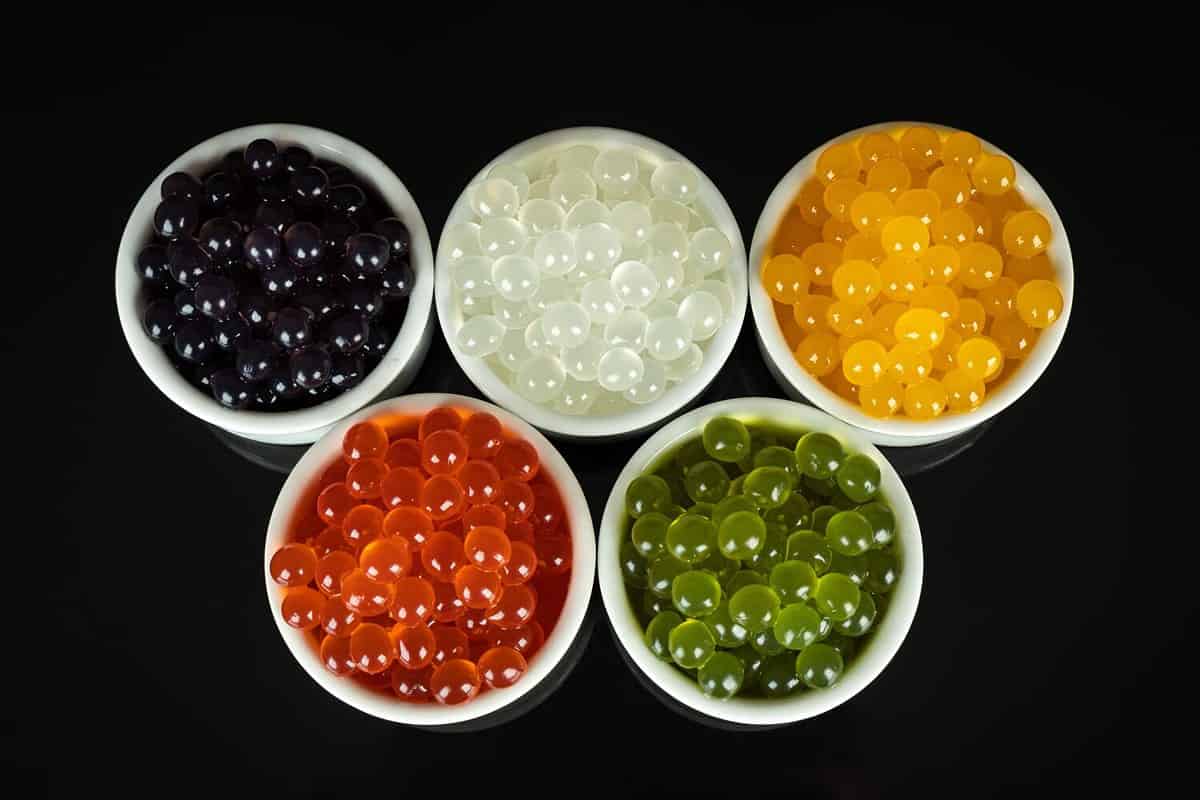
©Michael Dechev/Shutterstock.com
History and Origin of Tapioca Starch
Tapioca starch is native to the West Indies and parts of South America. Known as “mandioca” in South American languages, “manioc” in African Francophone countries, “yuca” in Spanish, and “tapioca” in Asian cultures, cassava root has many uses. The root was grown for thousands of years in areas such as Peru, Mexico, Honduras, and Guatemala long before it made it to the Americans. Trade routes between South America and Portugal in the 15th century brought cassava roots to areas across Africa. It wouldn’t reach Asia til the 17th century but continued to spread with imperialism and trade routes going strong. Today, Thailand is the largest producer of tapioca products. Cassava root has a slightly sweet taste, which makes it a great gluten-free flour for baked goods (via Thai Tapioca Starch Association). We’ll talk more about some recipes in a moment.
The Process of Making Tapioca Starch
Tapioca starch comes from crushing a washed cassava root into a pulp. The starchy liquid gets gathered to drain and dry. Drying out the liquid extract leaves behind a fine, starchy powder known as tapioca starch (via Healthline). Don't confuse tapioca starch/flour with cassava flour, which uses the whole root ground up. Tapioca flour is only the pulp extract. According to Bob’s Red Mill, it’s a great substitute for corn starch and can be used as a thickening agent in baked goods, sauces, gravies, and puddings. It has a slightly sweet taste and can provide a chewy texture to lots of traditional Southwestern dishes. Tapioca starch is gluten-free, which is a common staple for gluten-free, celiac, and paleo dieters.
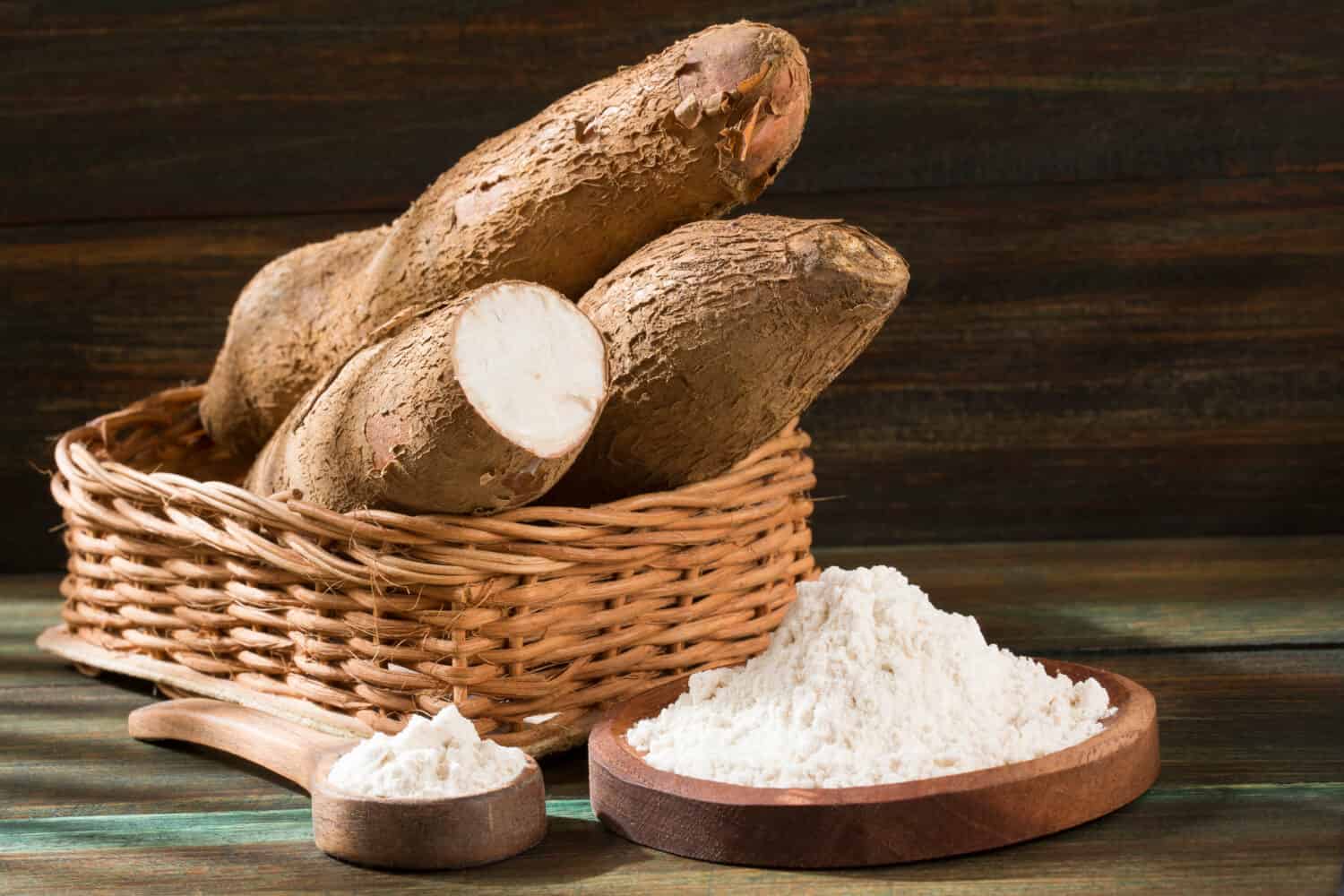
©Luis Echeverri Urrea/Shutterstock.com
Popular Uses
Tapioca starch is used in a number of traditional recipes. Use it to thicken, for gluten-free recipes, in pie fillings, and as a coating for crispy meats (via Masterclass). This is another example of using tapioca starch instead of wheat flour to bread meats and take the gluten out of a meal. Check out some of these recipes that utilize tapioca starch:
- Strawberry Rhubarb Pie
- Brazilian Cheese Bread (Pao de Queijo)
- Columbian Yuca Bread
- Gluten-free Peach Cobbler
Clearly, there are many ways to utilize different processed forms of cassava root. Its tapioca starch form is a great gluten-free alternative to gluten types of flour.
What Is Flour?
Flour is the milled and sifted product of ground-down grains, seeds, nuts, roots, and beans. Tapioca starch is a type of gluten-free flour, alongside almond flour, rice flour, buckwheat flour, and cassava flour. To see a full list of gluten-free flours, check out this list. Glutenous flours are derived from wheat grain. These flours include plain all-purpose flour, whole wheat flour, semolina flour, self-rising flour, and other recipe-specific variations (via KitchenAid).
History and Origin Of Flour
Wheat has been an important crop for thousands of years. Evidence suggests that, as far back as the ancient Romans, people have been grinding wheat grain to create a version of flour. Ancient Egyptians would use a tool similar to a modern-day hoe to sow the wheat crops. An actual relic used for this purpose dates back to 1,000 B.C. The Industrial Revolution made the processing of flour much more mechanical in nature. They depended on water power to grind the wheat grain and even had the technology to separate the parts of the wheat grain, which gave rise to the different iterations of wheat flour available today (via Flour.com).
More has come to light in regards to gluten sensitivity, celiac disease, and the nutritional benefits of specific nut-based flours. The result is that more and more kinds of flours are more widely available. These are processed in a similar way to wheat flour. Except they don’t go through the same extraction process. For instance, almond flour requires blanching the almonds before grinding them up. The skins are removed, allowing the powder to be even more finely ground into flour. But let’s learn a bit more about wheat-based flour processing.
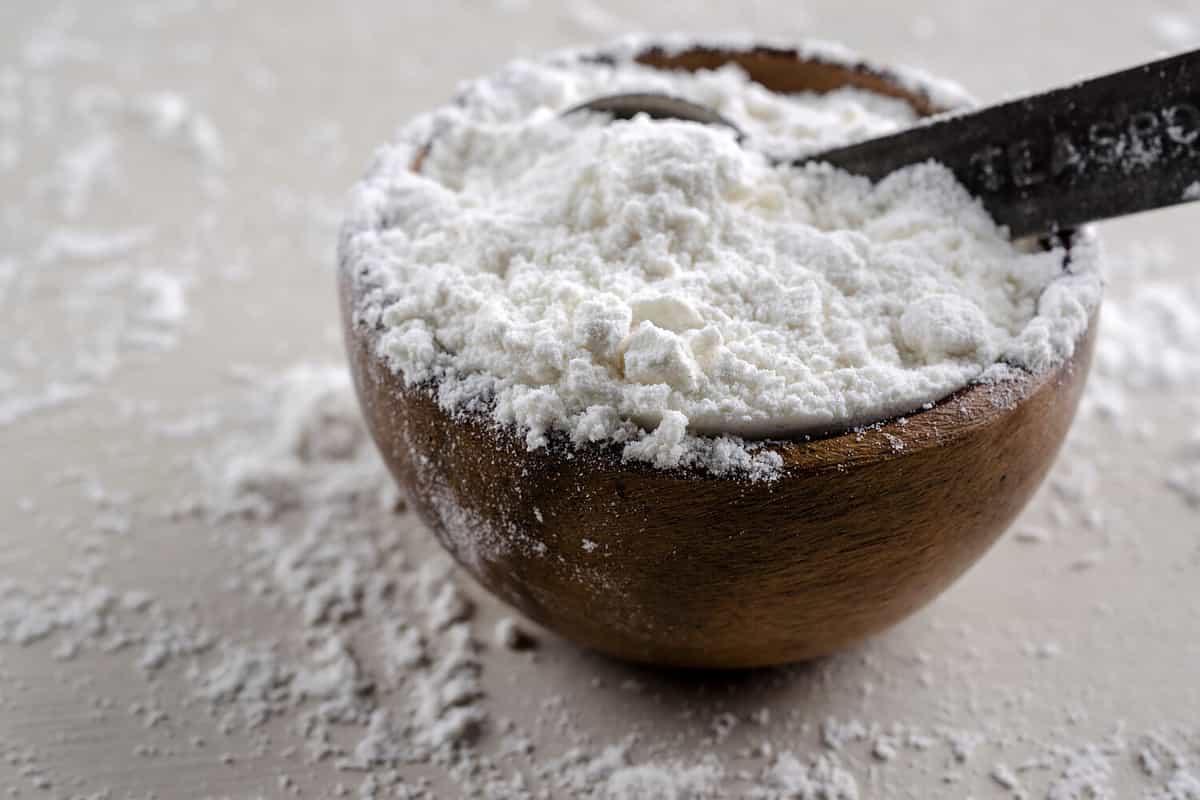
©Happie Hippie Chick/Shutterstock.com
The Process Of Making Flour
The main process for making wheat-based flour involves harvesting, milling, and sifting. After harvest and cleaning, the wheat grains dry out in silos. The grains go through conditioning in water, which softens them and makes it easier for the next step, which involves separating the bran (exterior) and the germ (interior) from the middle endosperm. The endosperm parts of the wheat grain become all-purpose flour. Meanwhile, non-separated wheat grain becomes whole grain flour once ground into a powder (via Fab Flour). Flour derived from seeds, nuts, and roots goes through a slightly different process. But there’s still an emphasis on grinding down the unit into a fine, starchy powder for use in baking, cooking, and all kinds of recipes (via Brittanica).
Popular Uses
There are many uses for all kinds of flour. Check out these recipes that use wheat flour and other kinds of flour as a thickening, starch, or rising agent:
- Butternut Squash and Goat Cheese Galette
- Soba Noodles *buckwheat flour
- White Pizza (crust)
- Matzo Ball Soup
- White Chicken Pot Pie
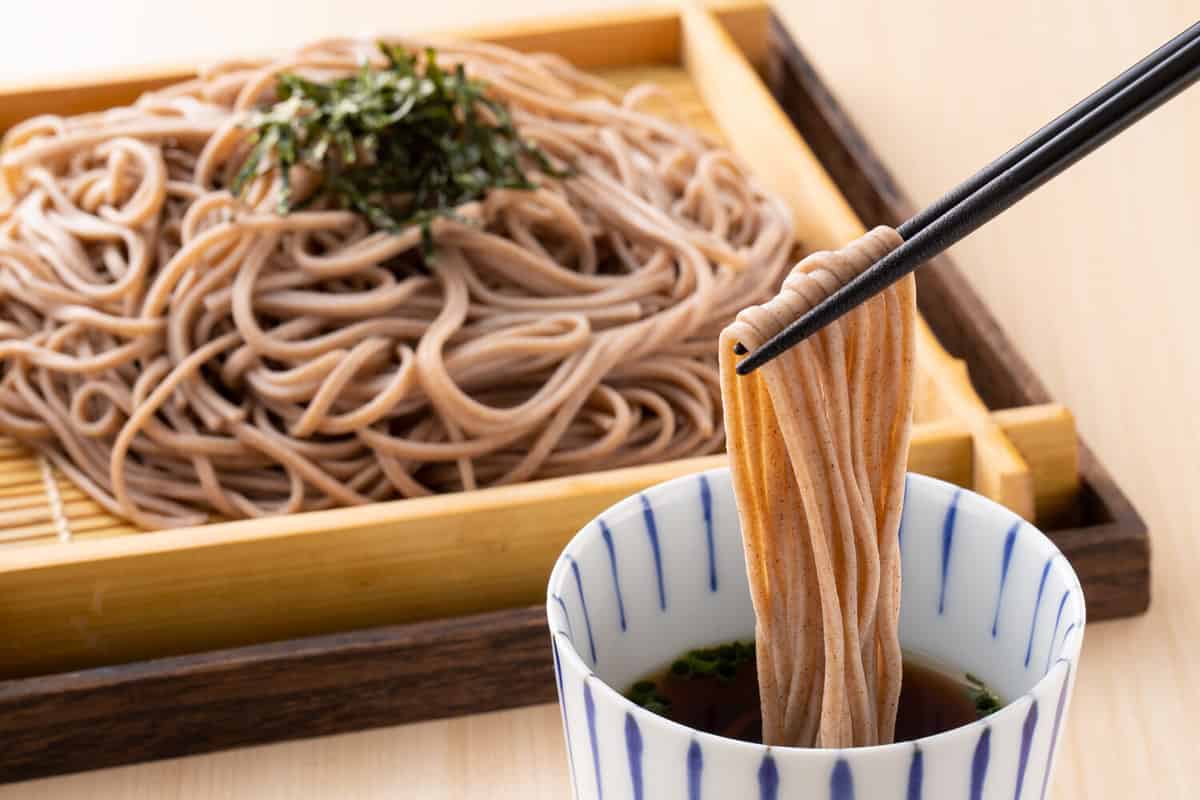
©jazz3311/Shutterstock.com
Nutritional Value of Tapioca Starch vs. Flour
Tapioca starch is an “empty calorie source.” It’s made up of carbohydrates, which are easily burnable. It has no nutrients to its name because it’s almost pure starch. Flour’s nutritional makeup depends very much on what kind of flour it is. Whole grain flour is going to be more nutritious than all-purpose bleached flour. One of the healthiest gluten-free flour options is actually almond flour, which contains lots of healthy fats, vitamins, and minerals.
Tapioca Starch vs. Flour: Are They the Same Thing?
This is kind of a trick question because while tapioca starch is technically a gluten-free flour, not all flour is gluten-free, and it’s unique from cassava flour, even though they come from the same root. So there’s definitely some crossover in terms of what they are used for. The fact is that tapioca starch and other kinds of flour differ in how they are made, what they are made of, as well as what they taste like, and their gluten content.
The image featured at the top of this post is ©Africa Studio/Shutterstock.com.
